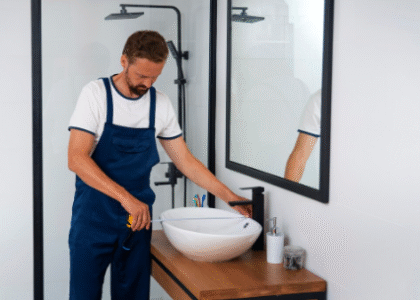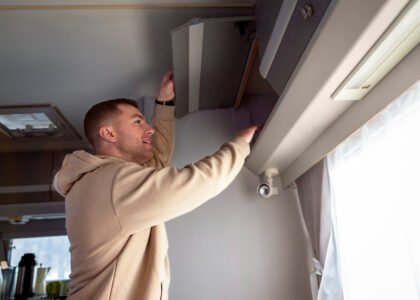Energy efficiency is more important than ever. Not only does it help lower your utility bills, but it also reduces your carbon footprint and helps conserve natural resources. The good news is that improving energy efficiency in your home doesn’t have to be complicated or expensive. There are simple, practical steps you can take to make your home more energy-efficient. In this article, we’ll explore five effective ways to boost energy efficiency and save money in the long run.
1. Upgrade to Energy-Efficient Appliances
One of the easiest ways to improve energy efficiency is by replacing outdated appliances with energy-efficient models. Many older appliances, such as refrigerators, washing machines, and water heaters, consume more energy than necessary. Today’s energy-efficient appliances are designed to use less electricity while providing the same performance.
When purchasing a new appliance, look for the Energy Star label, which indicates that the appliance meets strict energy efficiency standards. Energy-efficient appliances can reduce your energy consumption, lower your utility bills, and even qualify for rebates or tax incentives. While the initial investment may be higher, the savings over time make it a smart choice.
2. Seal and Insulate Your Home
A well-insulated home is a key factor in reducing energy loss. If your home is poorly insulated, you could be wasting energy and money on heating and cooling. Insulation acts as a barrier to prevent warm or cool air from escaping, keeping your home comfortable year-round.
Start by sealing gaps around windows, doors, and other openings where air can leak in or out. Use weather-stripping or caulk to seal these areas. Adding insulation to your attic, walls, and floors can further reduce energy loss. Proper insulation not only boosts energy efficiency but also helps maintain a consistent indoor temperature, making your home more comfortable.
3. Upgrade Your Lighting
Lighting accounts for a significant portion of household energy use. Switching to energy-efficient lighting can make a noticeable difference in your electricity bill. Traditional incandescent bulbs use a lot of energy and have a shorter lifespan compared to modern lighting options like LED bulbs.
LED lights use up to 75% less energy and last 25 times longer than incandescent bulbs. They are available in various colors and brightness levels, making it easy to find the right lighting for any room. Consider replacing all your old bulbs with energy-efficient LEDs, and don’t forget to turn off lights when you leave a room to maximize savings.
4. Use Smart Thermostats
A smart thermostat can significantly improve your home’s energy efficiency by helping you control your heating and cooling systems more effectively. Unlike traditional thermostats, which need to be manually adjusted, smart thermostats learn your schedule and adjust the temperature automatically.
With a smart thermostat, you can set your home to be cooler when you’re at work or asleep and warmer when you’re home. Many models also allow you to control your thermostat remotely via smartphone apps. By optimizing your heating and cooling system, you can reduce energy waste and lower your monthly utility bills. Some smart thermostats even offer reports on your energy usage, so you can track how much you’re saving over time.
5. Schedule Regular Inspections and Maintenance
Regular maintenance is essential to keep your home’s electrical systems, HVAC units, and appliances running efficiently. Over time, systems can become less efficient due to wear and tear, dust buildup, or minor issues that go unnoticed. Scheduling routine inspections ensures that everything is working as it should and can help you avoid costly repairs down the road.
For example, an annual inspection by a professional electrical services provider can identify potential issues with your home’s electrical system, such as faulty wiring or overloaded circuits. Maintaining your heating and cooling systems through regular service checks ensures that they run at peak efficiency. By addressing small issues early, you prevent larger, more expensive problems in the future.
Conclusion
Boosting energy efficiency in your home doesn’t require drastic changes or a huge financial investment. By upgrading to energy-efficient appliances, improving insulation, switching to LED lighting, installing a smart thermostat, and scheduling regular maintenance, you can make a significant difference in your energy consumption. These steps will not only help you save money but also contribute to a more sustainable future. Start implementing these strategies today and enjoy a more energy-efficient, cost-effective home for years to come.






